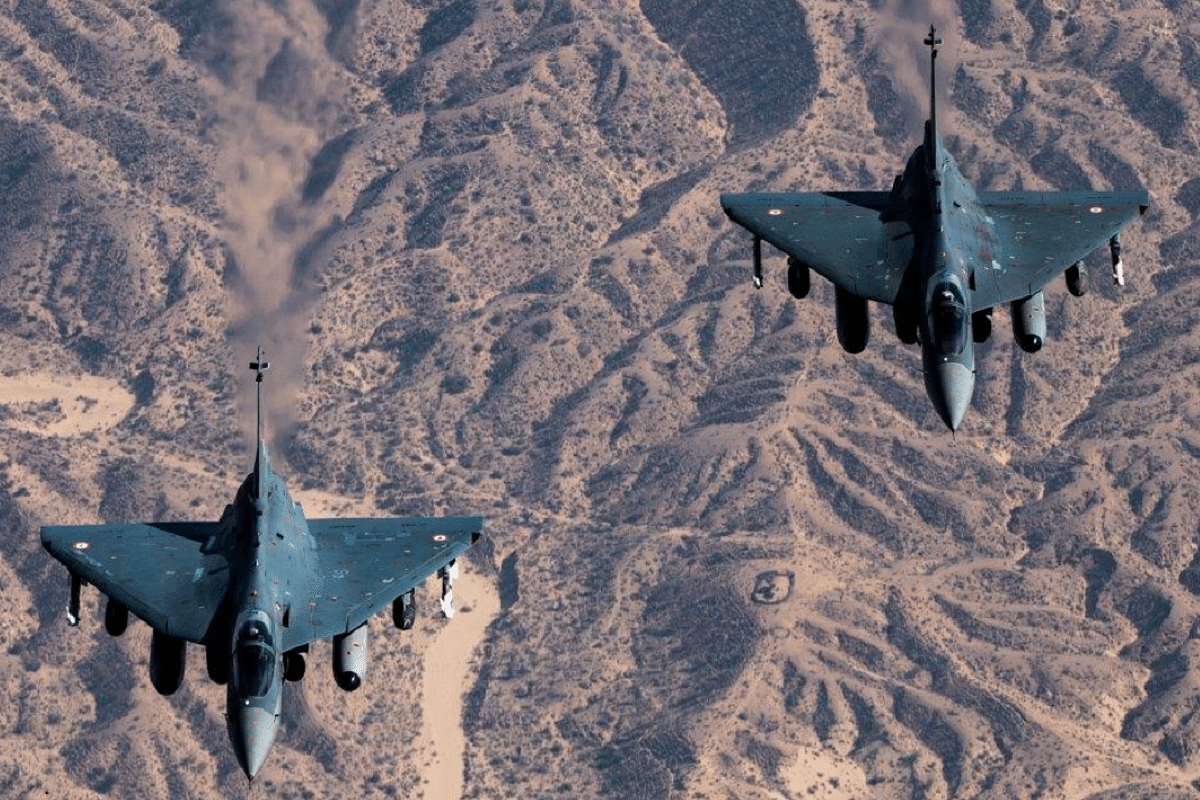Defence
In A Major Milestone, Tejas Mk-1 Completes Seven Years In-Service With The IAF

The LCA Tejas of the Indian Air Force. (image via IAF website).
The indigenously developed Tejas Mk-1 is set to complete seven years in-service with the Indian Air Force (IAF) on 1 July, completing a major milestone since its induction.
The Light Combat Aircraft (LCA) program was started in the early 1980s, with the Government of India (GoI) establishing the project in 1983 to replace Mig-21 fighters.
The first prototype took its first flight in January 2001 and the fighter was named Tejas.
After more than a decade of trials, the first jet was finally inducted by the IAF in 2016 in the No. 45 squadron 'Flying Daggers'. In 2020, the No.18 squadron 'Flying Bullets' became the second squadron to start operating the jet.
Since than the jet has accumulated more than 4,000 hours of incident-free flying.
The Tejas Mk-1 is light supersonic multirole jet, capable of doing multiple missions including air-defence (air-to-air), intelligence, surveillance and reconnaissance (ISR), air-interdiction (striking enemy targets deep into enemy territory) and maritime strike and reconnaissance missions.
The jet carries, an Israeli laser designating pod, multi-mode radar, helmet mounted display system and self-protection suite.
Its other variant — Tejas Mk-1A — 83 of which the IAF ordered from Hindustan Aeronautics Limited (HAL) in a deal worth Rs 48,000 crore in 2021, will be even more advanced.
Tejas Mk-1A will have 40 major improvements compared to the Tejas Mk-1.
It will have an active electronically-scanned array radar for detecting enemy aircraft at greater ranges and resistance to jamming, a new advanced self protection jamming suite (ASPJ), digital flying control computer (DFCC), as well as, faster turnaround times for each aircraft after every sortie.
Support Swarajya's 50 Ground Reports Project & Sponsor A Story
Every general election Swarajya does a 50 ground reports project.
Aimed only at serious readers and those who appreciate the nuances of political undercurrents, the project provides a sense of India's electoral landscape. As you know, these reports are produced after considerable investment of travel, time and effort on the ground.
This time too we've kicked off the project in style and have covered over 30 constituencies already. If you're someone who appreciates such work and have enjoyed our coverage please consider sponsoring a ground report for just Rs 2999 to Rs 19,999 - it goes a long way in helping us produce more quality reportage.
You can also back this project by becoming a subscriber for as little as Rs 999 - so do click on this links and choose a plan that suits you and back us.
Click below to contribute.
Latest